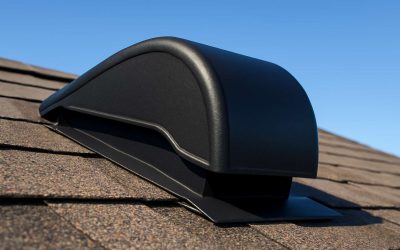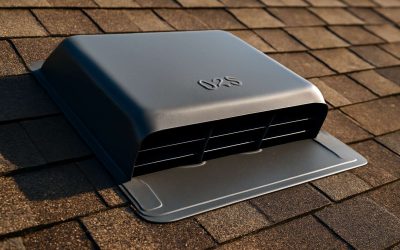Roof ventilation is crucial to your home’s comfort and energy efficiency. It keeps your house cool in summer and warm in winter, reduces air conditioning costs, extends the life of your roof and helps prevent mold, mildew and other moisture damage to the structure.
How It’s Done
To add attic vents, you need to cut holes into the rafters evenly along your roof. It’s a simple process and doesn’t require special tools like ladders, so it’s easy to do yourself or have a pro take care of it.
Before you start, decide where you want to put the vents. Your roofing contractor can help you with this, as they’ll be able to make recommendations based on the type of roof you have and your specific needs.
You’ll need to consider the shape of your roof and what it’s made of, such as shingles or metal. Hip roofs (which are a pyramid-shaped structure with a flat top) and roof valleys are particularly hard to ventilate because they create dead spots of stagnant air in the attic.
Gable roofs are another type of roof that can be a problem when it comes to venting. They have ridges that run the length of the roof, but the peaks are taller than the ridges, which makes it harder for hot air to rise up and escape from the vents on the ridge.
Box vents are another type of roof vent that’s popular. They can be found on all types of homes, and are especially useful in locations where high winds are common.
They work with a variety of other vents on the roof, such as ridge and edge vents, to allow air to naturally flow under the roof. You can find them in a wide variety of styles at home centers, so it’s best to consult your roofing contractor about which ones are right for you and your roof.
You can also install baffles on your attic to help the venting process. These small boxes are placed between rafters and help keep the insulation in the space between them from blocking your roof vents, making it easier to get the air you need out of the attic.
These are a common way to help your roof ventilate, and they’re often installed on newer houses that aren’t insulated. They’re available at many home centers and are a quick and inexpensive fix to improve your ventilation system.
How to Maintain Your Roof Ventilation
The roof and attic of your home should be regularly inspected for signs of moisture, including mold, mildew, and ice dams. These can be a warning sign that your roof isn’t properly ventilated, so it’s important to address them as soon as possible.
Ensure that your roof vents are free of obstructions, including trees, leaves, and other debris that could block them. It’s also a good idea to check your attic insulation and see that it’s in good shape.
It’s also a good idea to use weather stripping at your roof vent openings to keep water from entering the attic. This will prevent moisture from coming into the home through the attic, which can cause mold and other moisture-related problems.



0 Comments